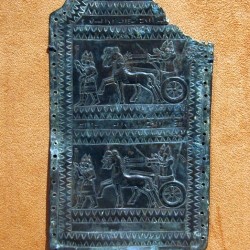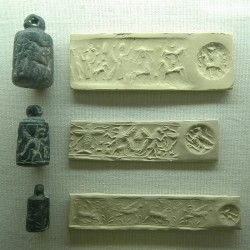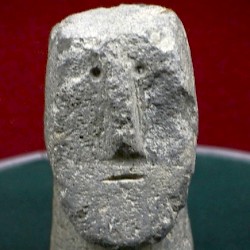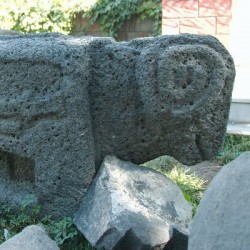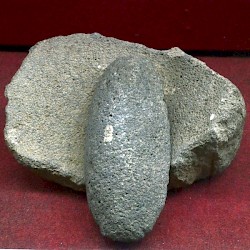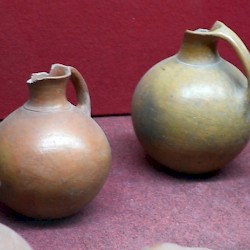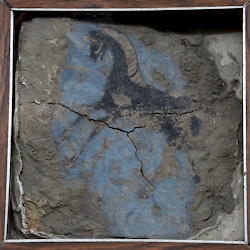Urartu
Q185068Urartu (Akkadian Uraštu; Hebrew Ararat): ancient kingdom, situated along the river Araxes (modern Aras), the Upper Tigris and the Upper Euphrates.
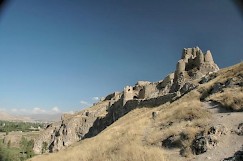
The original name of Urartu was Biainele; its capital was the rock fortress Tušpa (modern Van in eastern Turkey). The country may be envisaged as a big rectangle, with Lake Van ("Thospitis") as its center, Lake Urmia ("Matianus") as its southeastern border, Lake Sevan ("Lichnitis") as its northeastern limit and the Upper Euphrates as its northwestern corner. In its center was the mountain Masis. This impressive, isolated summit was in the Middle Ages called after the ancient kingdom: the Ararat, so well-known from the Biblical story about Noahnote and the Great Flood.
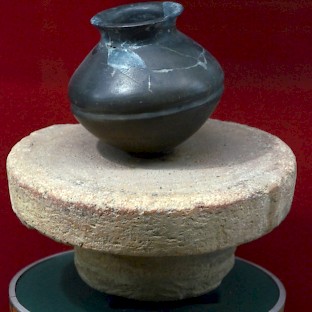
The people of Urartu, famous metalworkers, spoke a language that was related to Hurrian (a language that has no other known connections), and they adapted a simplified Assyrian cuneiform script for their own purposes. Scholars can read most inscriptions - although there are not many - and understand them: nearly all of these texts refer to the building activities of the Urartian kings. This means that for a reconstruction of Urartian history we depend on Assyrian sources.
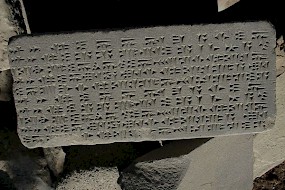
It appears that from the second quarter of the early ninth century on, Urartu was ruled by a single dynasty, which expanded the kingdom to the south in a period when Assyria was weak. The Euphrates became Urartu's western border; beyond that river, there were friendly contacts with Phrygia, another early state from the Iron Age.
However, Assyria recuperated and in 714 BCE, the Armenian king Rusa was defeated by the Assyrian king Sargon, who marched almost unopposed through the country in the north and took possession of the statue of the Urartian supreme god Haldi. (The event is recorded in the Assyrian Eponym List.) After this humiliation, Rusa refused to live and committed suicide.
|
Aramu |
... - c.840 |
|
Sardure I |
c.840 - c.830 |
|
Išpuine |
c.830 - c.810 |
|
Minua |
c.820 - c.785/780 |
|
Argište I |
c.785/780 - 756 |
|
Sardure II |
756 - c.730 |
|
Rusa I |
c.730 - 714/713 |

Rusa was succeeded by Argište II, who chose for an "internal expansion": the country along the Araxes was developed - something which is proved by archaeologists, who have established that there are far more seventh-century than eighth-century settlements. Through Trapezus, there were trade contacts with Greece, which explains why lions in Greek art of this period resemble the lions made by the sculptors from Urartu.
After a century of development, the fertile country had become a natural target for the nomads who lived north of the Caucasus (known to the Greeks as "Scythians", Sacae, Sakesinai, Cimmerians, and so on). Archaeologists have discovered that many Urartian fortresses (e.g., Karmir Blur, modern Yerevan) were destroyed shortly before 600 BCE. Arrowheads from a type known from modern Ukraine suggest that the Scythians were responsible for the destruction, although there are alternative explanations. The problem is that our Assyrian sources come to an end at precisely this moment: the Babylonians and Medes captured Nineveh in 612 BCE.
|
Argište II |
713 - ? |
|
Rusa II |
mentioned in 673/672 and 655/654 |
|
Sardure III |
mentioned in 643 |
|
Erimena |
mentioned as father of Rusa III |
|
Rusa III |
end of seventh century |
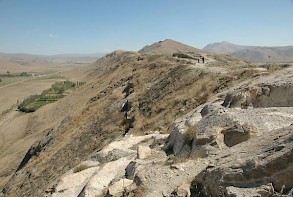
Having suffered from the Scythian invasion, the country could have been an easy target for the Babylonians, but they appear to have been not interested. It is more likely that Urartu was subject to some kind of Median supremacy, because in 585 BCE, a Median army fought a battle at the river Halys in central Turkey against the Lydian king Alyattes. This is only possible if the Medes had found a way to pass through Urartu.
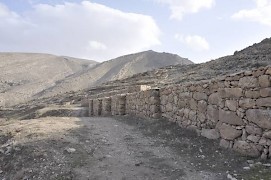
Annexation is a possibility and perhaps the Median conqueror was Cyaxares. Alternatively, control remained very lose, and the end of Urartu as an independent kingdom should be dated a bit later, in 547,note during the reign of Cyrus the Great, the Persian king who overthrew the Medians. It must be noted that sites like Çavustepe were not only destroyed by the Scythians, but also by a second, unidentified enemy. This may have been a Median or a Persian army.

Whatever the precise circumstances of the fall of Urartu, in the second half of the sixth century, Urartu was a satrapy of the Achaemenid Empire; the satrap appears to have resided in a palace in Erebuni, modern Yerevan, where an apadana (throne hall) has been identified.
Among the Urartian sites are:
- Turkey: Adilșevaz, Altintepe, Anzaf, Astwadzashen, Çavustepe, Kayalidere, Patnos, Toprakkale, Van (ancient Tušpa)
- Iran: Bastam, Hasanlu, Haftavan Tepe
- Armenia: Erebuni, Karmir Blur; inscriptions have been found in a/o Garni (text), Lchashen, Zvarnots
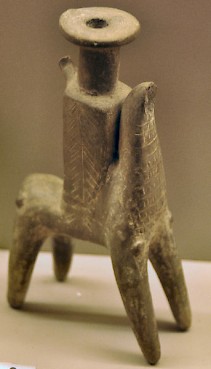
Urartu lived on as a satrapy, and later as an independent kingdom called Armenia.
Literature
- Kemalletin Köruğlu & Erkan Konyar (eds.) Urartu. Transformation in the East (2011 Istanbul)
- A. Kuhrt, The Ancient Near East, c.3000-330 BC. Vol.II (1995 London) 548-561
- R. Rollinger, "The Median 'Empire', the End of Urartu, and Cyrus' Campaign in 547" in: Proceedings of the First International Conference on Ancient Cultural Relations between Iran and West Asia (2004).
